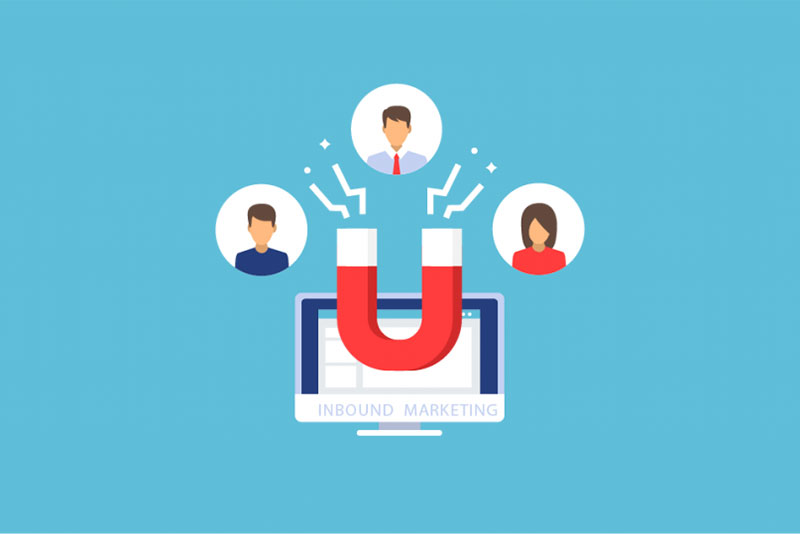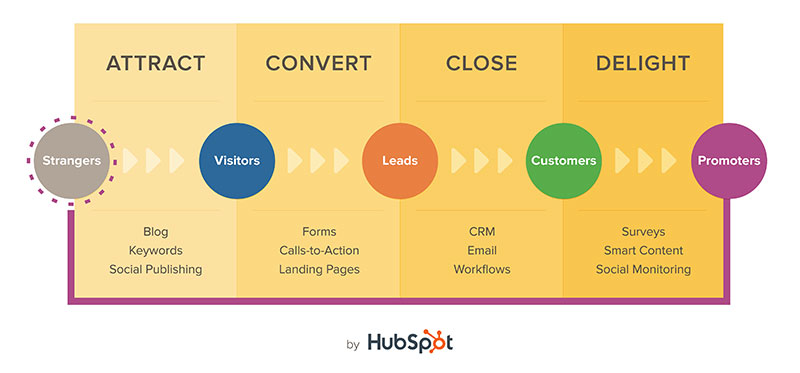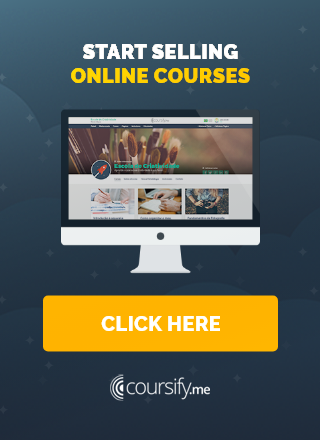Inbound Marketing: How You Can Use It to Attract Customers
If you are starting an online business, you have probably heard of Inbound Marketing.
Unlike traditional marketing, Inbound Marketing is focused on creating a customer relationship.
Its premise is to deliver content and attract the audience to the product, rather than offering it directly to the consumer.

What is Inbound Marketing?
The term was coined in 2005 when HubSpot CEO Brian Halligan and his partners realized that the disruptive traditional form of marketing was no longer worth it.
The new “idea” caught on quickly after that and this led to a long cycle of constantly evolving marketing strategy optimization, including search engine optimization, content marketing, etc.
– Advantages of Content Marketing for Your Business
In short, Inbound Marketing is a Digital Marketing strategy that attracts qualified leads to your site.
Instead of advertising products, the focus is on getting potential customers’ attention by using tools like search engine optimization and social media.
It’s a process that attracts, engages, and delights your audience by helping them build trust in your brand to make them paying customers.
As technology evolves, Inbound Marketing teaches companies how to find more buyers effectively.
This is a better way to sell and serve your customers; After all, what is right for the customer is also good for business.
A good inbound marketing strategy involves creating content that appeals to your customers, helps them solve their problems, and tells them what they want to know.
Achieving this takes a great deal of work and dedication, but companies are increasingly adapting to this new form of marketing because they see dramatic changes in buyer behavior and need tools to address these trends.
Why do you need to learn more about Inbound Marketing?
Modern companies around the world invest in creating blogs, podcasts, eBooks, videos, and more, promoting these materials through social campaigns and via email.
– How to Use Your Blog as a Marketing Tool
This is all part of the larger Inbound Marketing strategy, which works to ensure rapid and continuous business growth.
The successes and benefits of Inbound Marketing are already quite apparent and measurable. For example, did you know that companies using blogs have 13 times more positive ROI?
Inbound Marketing delivers quality to your audience, serves their interests, attracts them to your offerings and keeps them coming back for more.
Best of all, it’s not paid advertising. You own all of your content and host it on your website and social media pages, profiting from organic traffic.
On the other hand, paid ads like Google AdWords and Facebook Ads, stop appearing when you stop paying for them. Thus, the leads and traffic generated by them also stop.
Consider this: according to a 2016 survey, American adults spend 10 hours online every day on average — tied into their laptops, smartphones and tablets. So, of course, when they look for something, Google Assistant and Siri are just one command away to give them the answers they need.
The question is, do your ads appear in these search results?
Hardly. And if they appear, they engage little.
The click-through rate for all kind of banner ads is only 0.05%, which shows that 86% of Internet users have simply gone blind to banners. Not to mention that there are several ad blocking software, increasingly used by an audience that can not stand advertising anymore.
But while young audiences are tired of the onslaught of ads and marketing messages, they are still willing to engage with quality brands.
They are more likely to become paying subscribers and consumers as long as you can make them realize that the cost will be worth it.
Ad-free premium services are slowly attracting this audience and the only way for your company to compete in this environment is with a viable inbound marketing strategy.
Simply put, it is the natural evolution of marketing that is modernized into the digital age.
How Inbound Marketing Works
Inbound Marketing revolves around a specific set of marketing tools and processes that let you attract, engage, and delight potential customers.
Its methodology matches the way today’s consumers make purchasing decisions, requiring you to:
- Analyze the facts: Nowadays, the Internet is the means by which people research, decide, and buy. And we’re not just talking about products, but complex B2B services as well.
- Focus on Search Engine Optimization (SEO): It’s essential to continually generate and improve your content so that it performs better through keyword research and helps your site rank higher in search engines.
– How to Set Keywords for Your SEO Strategy
- Prioritize the user experience: Make it easy to navigate in your site. Offer clear communication and direct the user directly to what they are looking for. Consider that the attention span on the internet today is minimal and the longer your visitor takes to find what he wants, the worse for you as he will probably be looking for another option.
- Create valuable content: Make sure your site content answers your audience questions: “What’s for me?”, “How can you help me?” and “Why are you the best option?” Explain and emphasize this often.
- Convert traffic into leads and nurture them: Perform a process that meets, responds, and guides your prospects along the buyer’s journey until they are ready to close a deal.
– Tips for Creating a Customer Journey Map
- Build trust and credibility: Over time, potential customers need to identify your business as an essential resource for information, and by providing content focused on their needs rather than yours, you will gain their trust.
All of these inbound marketing methodologies are most easily executed with the help of marketing automation software (such as HubSpot, for example) that is fully integrated with your website CMS and CRM.
An integrated marketing automation platform will help you convert, close and delight customers in an organized and results-focused manner.
While much of the engagement and design process is automated, it can still be highly customized to customer needs through a holistic approach and custom workflows.
Common Inbound Marketing Strategies

The foundation of any successful Inbound Marketing strategy is relevant content.
But even this can be broadly defined. Here are the most common types of content that correspond to this strategy:
- Blog Posts: Connect with prospects regularly by demonstrating your industry knowledge, experience, and authority.
- Case Studies: Share success stories from others who have trusted your product or service to meet their needs.
- Guides, eBooks: Provide detailed information on a topic related to your business to educate and maximize lead generation.
- Checklists: This kind of rich and informative material provides quick and actionable tips for potential customers, having high attraction potential.
- Infographics: Use visual representations for content that contains tips, summary information, and supporting statistics.
- Videos: One of the best marketing methods to capture potential customer attention is explanatory videos, customer testimonials, tutorials, and more.
– Record tutorial videos: tips for getting the best result
- Email Marketing: Build a relationship with your leads and get them moving into the sales funnel through periodic email communication focused on their needs.
– How to Create a Successful Email Marketing Campaign
- Social Media: One of the best ways to promote your content is through posts and campaigns on social media.
How to Use Inbound Marketing to Sell Online Courses

Some say that Inbound Marketing is divided into three pillars: SEO, Content Marketing and Social Media Strategy. However, as its focus is to create ways to attract customer interest, this definition is somewhat flawed, as its only limit is your creativity.
There are several ways to do Inbound Marketing and each of them fit into one of five stages of Inbound which are:
Attract traffic
First you need to attract people to your site. Invest in SEO strategies to position your page well in search engines.
– SEO: Complete Guide For Your Website To Have More Online Visibility
The above list is a good way to start. We suggest you start by producing relevant , well-crafted blog content, because the more content, the more users and search engines find you.
Convert visitors into leads
In this second stage you will need even more seductive content, after all, you will be asking the user to give you something valuable, such as an email. This requires offering something that is really in his best interest.
Those who work with online courses, for example, may offer exclusive access to a course module, mini course, ebook, or any other material that your target audience considers to be of high value.
– Step by Step to Creating an Online Mini Course
Convert leads to sales
This is the time to focus and get right to the target. The user has already given his contact to you which proves that he is really interested, so it is time to offer more and hold your attention.
Invest in targeted email marketing with the right words and content. Offer a personalized service, show the user that you have information of interest.
Build customer loyalty
You’ve already sold your product, but your customer conversation doesn’t have to end. This is time to build a relationship.
Create a follow up strategy and build customer loyalty. Offer him special plans, access to other online courses, support material, etc.
Turn your customers into promoters of your brand
Doing a good job in the previous step makes this a lot easier. Delighting your customers and turning them into true ambassadors for your brand means your work has gone well.
To achieve this result offer your buyer more than one brand that produces content, but one with a purpose that he admires and is proud to be a part of.
Complete eLearning platform, Coursify.me is the ideal solution for those who want to create, sell and advertise courses on the internet.
Serving businesses and professionals in more than 60 countries, the platform is a dynamic and customizable Learning Management System (LMS).
– Whats is a Learning Management System
Coursify.me offers three plan options for you to decide which best suits your needs and the good news is that the Beginner Plan is free!
To learn more, visit our website, test the platform and understand why we are the best option for your online courses.

